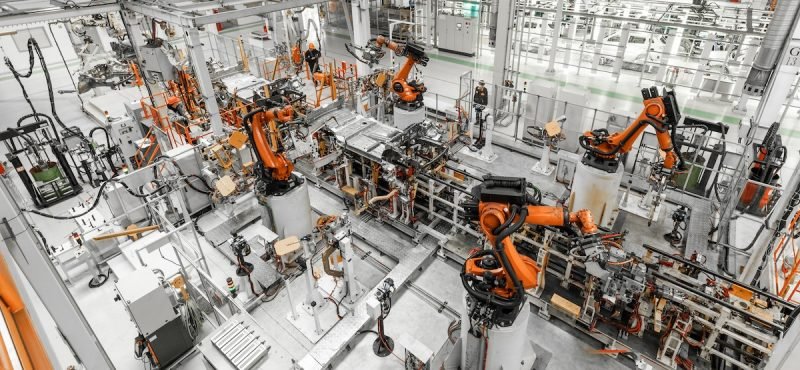
The rapid development of advanced digital technologies observed in recent years has led to an explosive growth in the use of modern methods across industries and businesses. From smart assistants and recommendation platforms to search engines and prediction algorithms based, Artificial Intelligence became an integral part of our daily lives. Automation and the development of autonomous solutions that require minimal human supervision are now in the center of interest not only for researchers but also business . The slogan or even buzzword “AI” attracts customers and contractors, creating the impression of modernity of the proposed products.
Integrating artificial intelligence into business operations offers numerous benefits, including increased efficiency, lower costs, improved customer experience and the ability to obtain insights from massive amounts of data. Intelligent assistants such as chatbots and virtual customer service agents provide instant, 24/7 support, increasing customer satisfaction and freeing up human resources for more complex tasks. Recommendation platforms personalize the user experience, increasing engagement and sales by suggesting products or content tailored to individual preferences.
What’s more, automation and autonomous solutions are revolutionizing industries by performing tasks that previously required human interaction. Autonomous vehicles, drones and robotic process automation (RPA) systems are just a few examples of how artificial intelligence is transforming a wide spectrum of industries. These technologies not only increase operational efficiency, but also improve safety and accuracy. However, the general adoption of artificial intelligence raises important questions: Can and should every business take advantage of the benefits offered by artificial intelligence? Is it always profitable to invest in this technology? What business areas and domains can be effectively supported with artificial intelligence methods?
In this article, we will explore these questions and look for answers, focusing on the potential applications of computer vision. We will consider different aspects of business operations and highlighting examples of how various industries are using the technology. In the following sections, we will delve into specific use cases and explore how computer vision can be successfully integrated into your business. We will also address typical challenges and considerations, providing a holistic understanding of how to use this powerful technology to achieve your business goals.
Let’s start from the basics, explaining what computer vision is about. Computer vision is a subset of AI, involving the development of algorithms that enable computers to interpret and process visual data from the world around them. This technology has broad implications and can be applied in numerous ways to enhance business operations. From automating quality control in manufacturing to enabling advanced security systems, computer vision offers a range of solutions that can drive business growth and innovation. Technically speaking it is a set of tools and methods for processing an image (or a sequence of images – video) to extract information about its content. This includes algorithms that analyze the image in terms of color distribution, brightness, and scene changes in the image sequence, which are based on sets of hard-coded, deterministic rules and provide predictable output. A separate group in this domain are artificial intelligence algorithms, such as object detection, classification and scene segmentation, which require extensive training data and machine learning processes to perform their tasks. These methods are not fully deterministic in the sense that the effectiveness of their operation and the obtained output information depend on the training data and parameters of the learning process. This property is very important when designing solutions and agreeing on the assumptions of IT projects aimed at processing visual information.

Computer vision applications are surprisingly versatile and are not necessarily restricted to the case where visual information is directly processed for needs related to the operation or creation of a product. Although, of course, in such fields it is easier to indicate potential areas of application for computer vision. Here are some potential applications:
All these tasks involve appropriate analysis of the visual analysis of an image (document, product, person) and processing it into output information (e.g. invoice data, description of X-ray images, number and quality of product defects, classification of protective wear, person identity or approval for evidence of completed tasks). Such jobs can be successfully performed by computer vision algorithms. They can digitize written documents, detect and classify objects on the scene, determine outliers in the visual patterns or recognize and reidentify humans. See our overview of applications in the security and medical industries.
Even if your business doesn’t directly use visual information, it can be helpful, even invaluable for decision making, helping in diagnosing the current state and determine directions of development. Here is how:
By leveraging computer vision for these applications, businesses can make more informed decisions, optimize operations, and enhance efficiency. Explore our linked posts to learn more about how computer vision is transforming various industries.
If you run an online store selling clothes or glasses? How can you provide customers with the comfort of choosing and trying on, just like in stationary stores? Computer vision can significantly enhance the customer experience, here are some examples:
Computer vision can provide a more interactive and engaging shopping experience, driving customer satisfaction and loyalty.

Identifying your opportunities in applications of computer vision is a first step to success. If you are unsure or need consulting, our team of experts can help you to define the opportunities that computer vision can introduce in your company.
Even if you are already convinced, further dilemmas will appear. Several decisions need to be made:
All these decisions often determine the future success of your computer vision project.
The BoBox team is here to help you leverage computer vision to meet your business needs. Our experts can guide you through the entire process, from identifying opportunities to implementing solutions.
Contact us today to find out more and start your journey towards bringing the power of computer vision to your business!